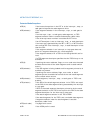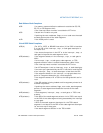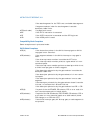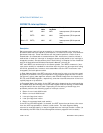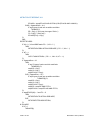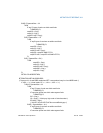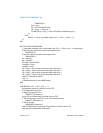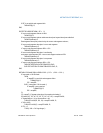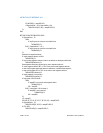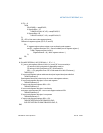
3-490 Vol. 2A IRET/IRETD—Interrupt Return
INSTRUCTION SET REFERENCE, A-M
IRET/IRETD—Interrupt Return
Description
Returns program control from an exception or interrupt handler to a program or
procedure that was interrupted by an exception, an external interrupt, or a software-
generated interrupt. These instructions are also used to perform a return from a
nested task. (A nested task is created when a CALL instruction is used to initiate a
task switch or when an interrupt or exception causes a task switch to an interrupt or
exception handler.) See the section titled “Task Linking” in Chapter 6 of the Intel® 64
and IA-32 Architectures Software Developer’s Manual, Volume 3A.
IRET and IRETD are mnemonics for the same opcode. The IRETD mnemonic (inter-
rupt return double) is intended for use when returning from an interrupt when using
the 32-bit operand size; however, most assemblers use the IRET mnemonic inter-
changeably for both operand sizes.
In Real-Address Mode, the IRET instruction preforms a far return to the interrupted
program or procedure. During this operation, the processor pops the return instruc-
tion pointer, return code segment selector, and EFLAGS image from the stack to the
EIP, CS, and EFLAGS registers, respectively, and then resumes execution of the inter-
rupted program or procedure.
In Protected Mode, the action of the IRET instruction depends on the settings of the
NT (nested task) and VM flags in the EFLAGS register and the VM flag in the EFLAGS
image stored on the current stack. Depending on the setting of these flags, the
processor performs the following types of interrupt returns:
• Return from virtual-8086 mode.
• Return to virtual-8086 mode.
• Intra-privilege level return.
• Inter-privilege level return.
• Return from nested task (task switch).
If the NT flag (EFLAGS register) is cleared, the IRET instruction performs a far return
from the interrupt procedure, without a task switch. The code segment being
returned to must be equally or less privileged than the interrupt handler routine (as
indicated by the RPL field of the code segment selector popped from the stack).
Opcode Instruction 64-Bit
Mode
Compat/
Leg Mode
Description
CF IRET Valid Valid Interrupt return (16-bit operand
size).
CF IRETD Valid Valid Interrupt return (32-bit operand
size).
REX.W + CF IRETQ Valid N.E. Interrupt return (64-bit operand
size).



